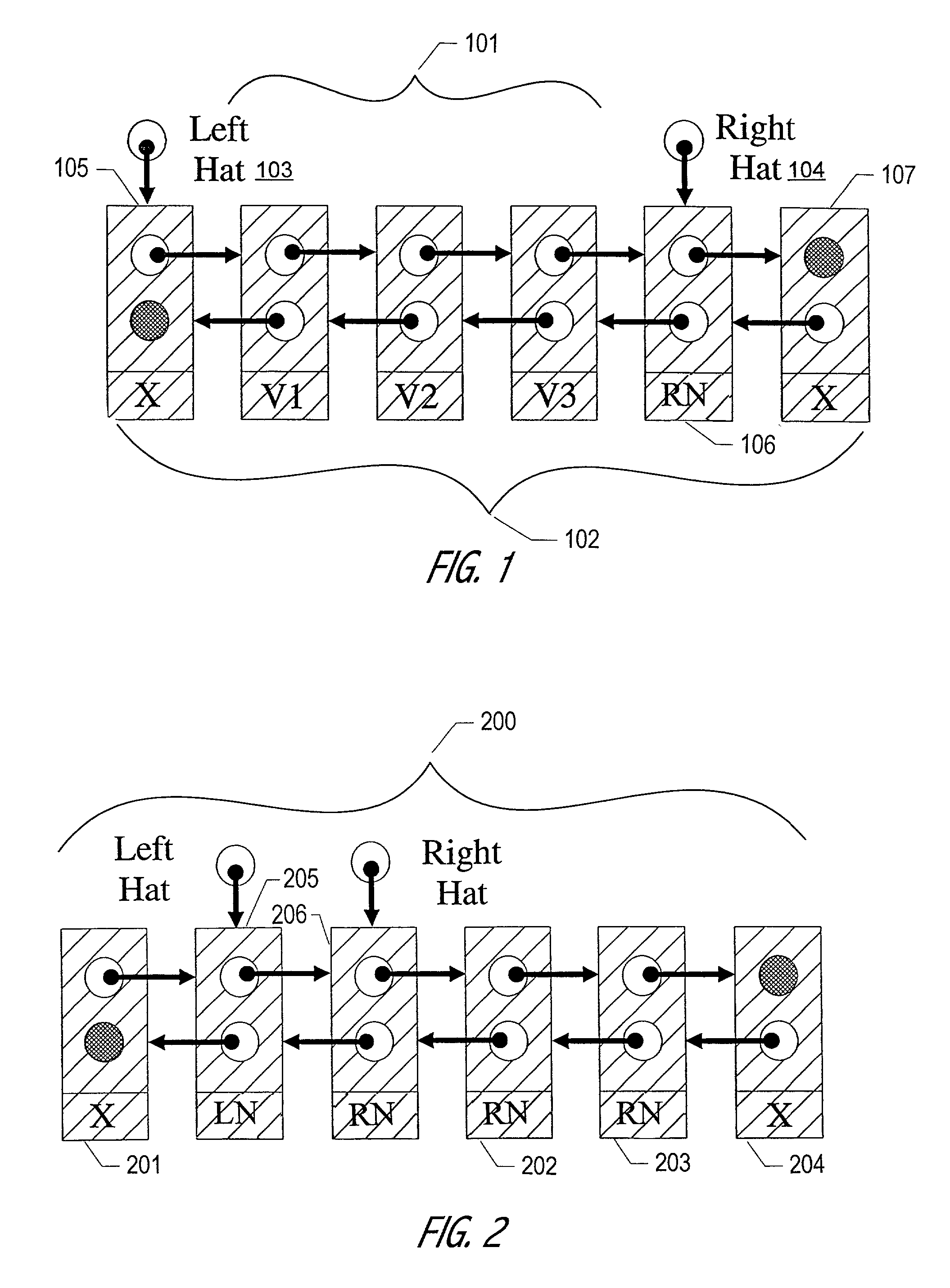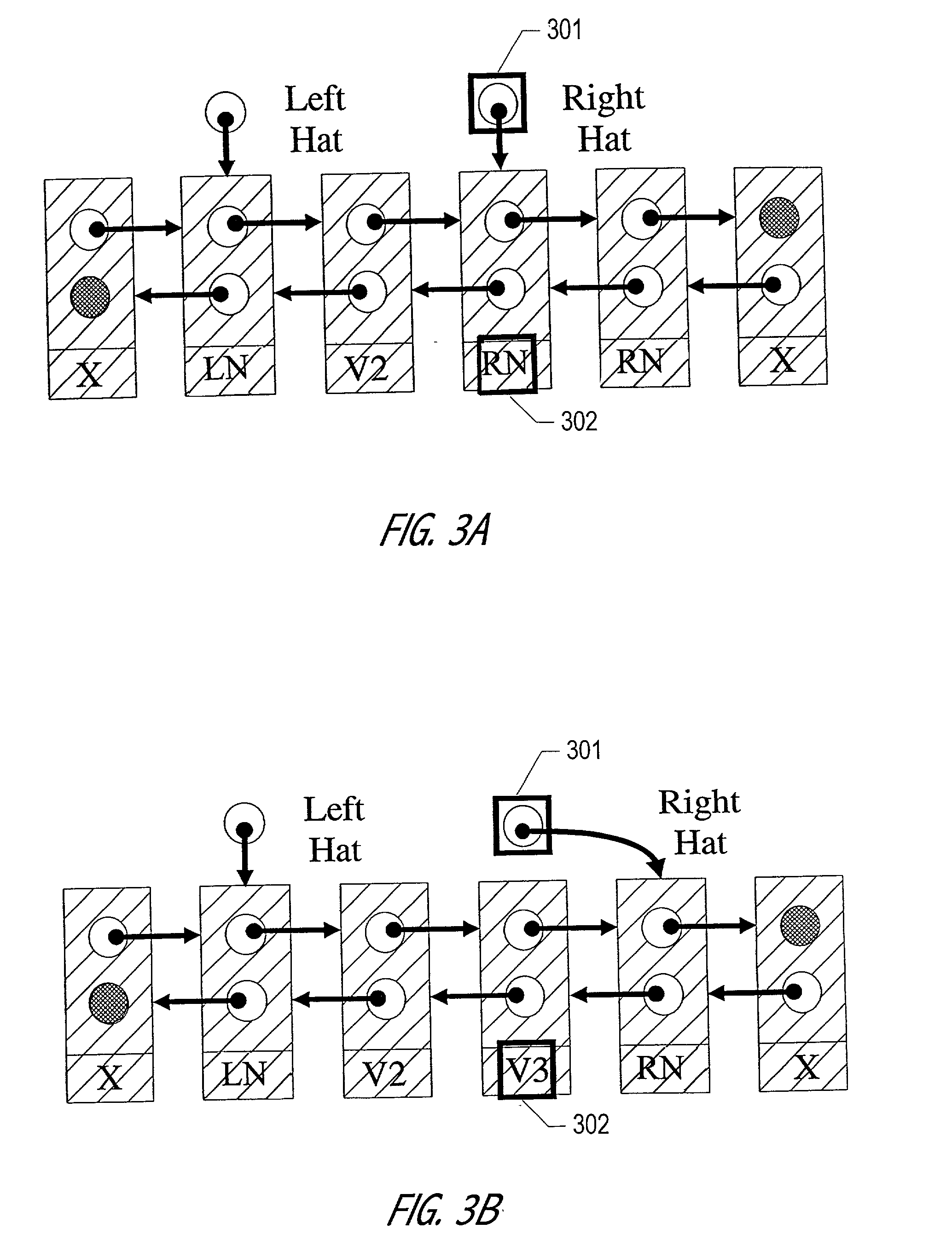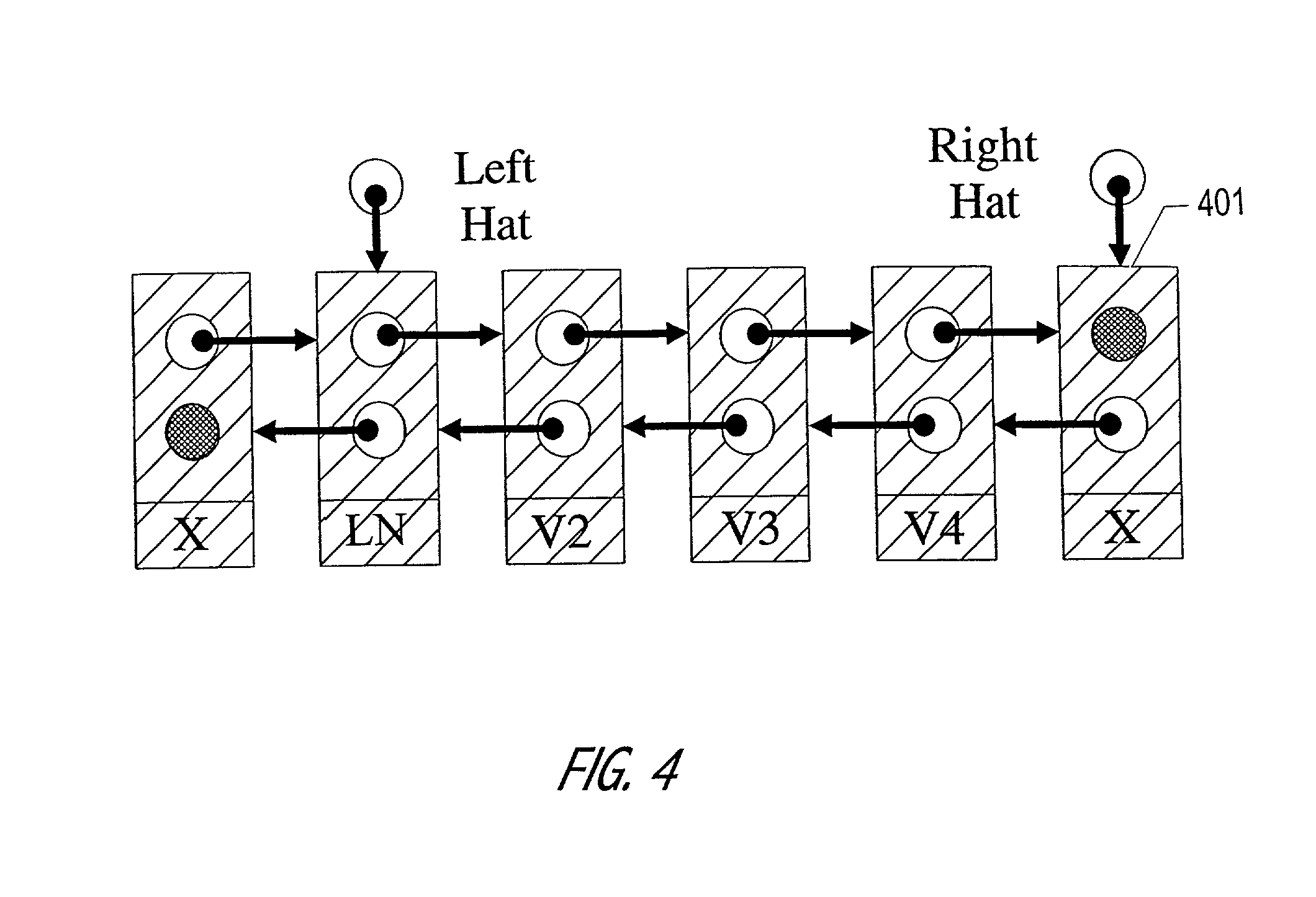Concurrent shared object implemented using a linked-list with amortized node allocation
a shared object and linked-list technology, applied in the direction of multi-programming arrangements, program control, instruments, etc., can solve the problems of limiting overall concurrency, not being expressive enough to support the design of efficient non-blocking algorithms, and not being able to support compare-and-match,
- Summary
- Abstract
- Description
- Claims
- Application Information
AI Technical Summary
Benefits of technology
Problems solved by technology
Method used
Image
Examples
Embodiment Construction
)
[0038] The description that follows presents a set of techniques, objects, functional sequences and data structures associated with concurrent shared object implementations employing linearizable synchronization operations in accordance with an exemplary embodiment of the present invention. An exemplary non-blocking, linearizable concurrent double-ended queue (deque) implementation that employs double compare-and-swap (DCAS) operations is illustrative. A deque is a good exemplary concurrent shared object implementation in that it involves all the intricacies of LIFO-stacks and FIFO-queues, with the added complexity of handling operations originating at both of the deque's ends. Accordingly, techniques, objects, functional sequences and data structures presented in the context of a concurrent deque implementation will be understood by persons of ordinary skill in the art to describe a superset of support and functionality suitable for less challenging concurrent shared object implem...
PUM
 Login to View More
Login to View More Abstract
Description
Claims
Application Information
 Login to View More
Login to View More - R&D
- Intellectual Property
- Life Sciences
- Materials
- Tech Scout
- Unparalleled Data Quality
- Higher Quality Content
- 60% Fewer Hallucinations
Browse by: Latest US Patents, China's latest patents, Technical Efficacy Thesaurus, Application Domain, Technology Topic, Popular Technical Reports.
© 2025 PatSnap. All rights reserved.Legal|Privacy policy|Modern Slavery Act Transparency Statement|Sitemap|About US| Contact US: help@patsnap.com



